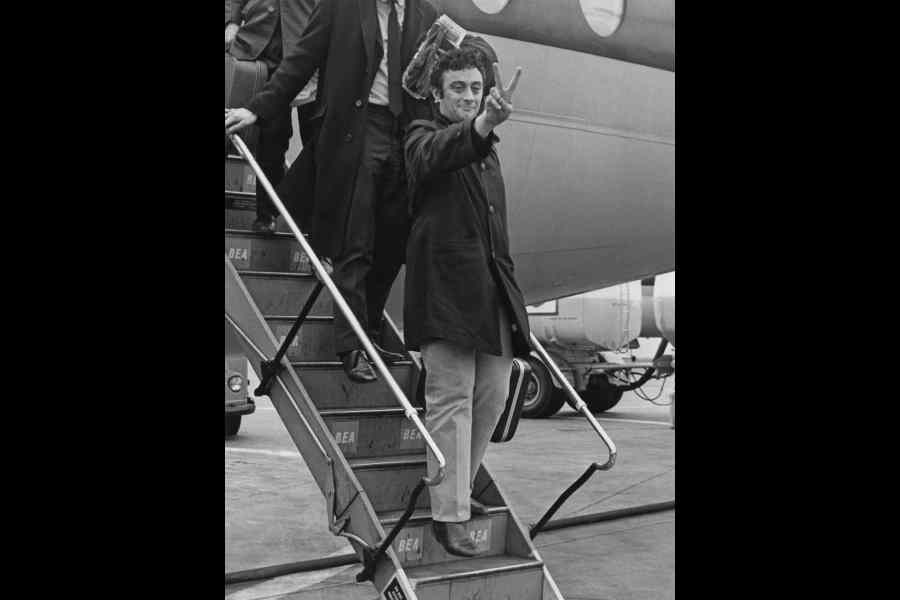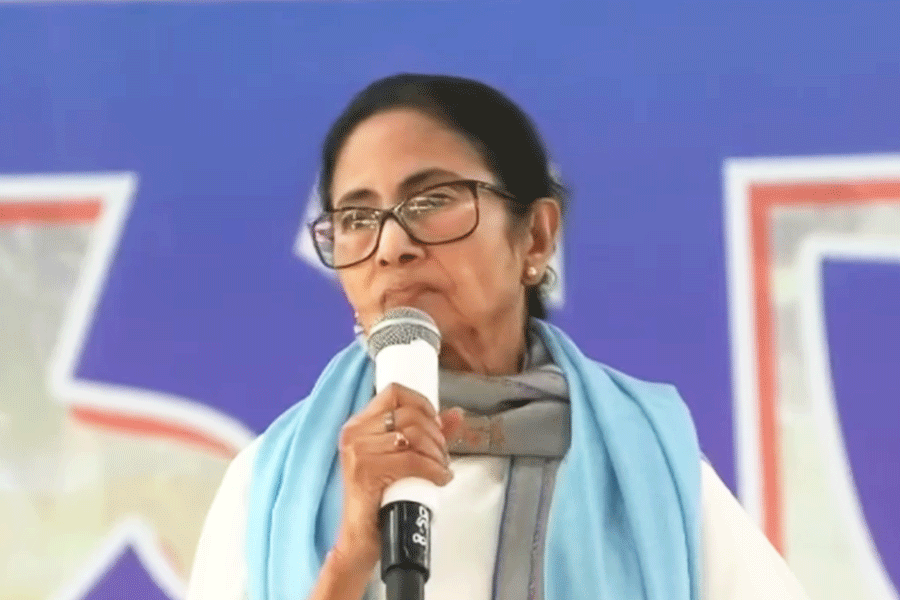Stand-up comedy has spread in India over the last two decades or so. Along with the proliferation of stand-up performers have come ancillaries to the stand-up genre such as ‘roasts’ and satirical skits on television and the internet. Linked to this, but also rapidly expanding as a trend in its own right, is the much freer use of street-abuse and ‘bad’ language in cinema, TV and public performances, something which reflects far more accurately how we actually think and speak as a society.
One typically conservative objection to all this is that it’s a result of regrettable foreign influence, that it stems from a shameful (and shameless) urge to ape the West. The people arguing this have clearly accepted a certain kind of polite, ‘vegetarian’ joke-making as their limiting model — think Johnny Walker and Asrani — while conveniently pushing all sorts of traditional, desi performed-satire under the carpet. The notion that you can’t use ribaldry and quasi-fictional verbal cartooning to make fun of surrounding society or those in power would seem strange to bohurupis, patuas, bauls, to first mention only forms from Bengal, as also to various singers, vidushaks and sutradhars around the subcontinent. We are and always have been an argumentative people; irreverent spoofery has been central to that combativeness. To take down priests, rulers or rich merchants using the sharpest words and imagery is as Indian and as ancient as daal-bhaat — the stand-up genre has simply come and joined this as a tributary.
Wikipedia tells us that Western stand-up comedy comes from various performance traditions such as 19th-century vaudeville, American burlesque, English music halls and so on. This Anglo-centric history leaves out other European satirical performance traditions. By the 1930s, the rendering of jokes, wisecracks and mimicry turn into routines, with no small help from the radio and the newly-developed sound cinema aka the talkies, and names like the Marx Brothers, Bob Hope and Abbot and Costello become household names, first in the United States of America and then in the English-speaking world. When television arrives after World War II, it seems as though the medium and stand-up comedy are almost made for each other. While American TV churns out its typical, somewhat bland, ‘family-friendly’ humour, there is a parallel movement taking place in clubs and bars across the US: late at night, a younger generation of performers begins serving a different fare to their adult-only audiences. Certainly the jokes here are more graphically sexual in nature but as the dialogue develops among audiences, which are often working-class or marginalised, the spiel also becomes increasingly political and sharp.
In the churn of the late 1950s-early 1960s America, many radical figures entered the public consciousness; along with people such as Martin Luther King, Malcolm X, Shirley Chisholm, James Baldwin and Bob Dylan, came the growing presence of a controversial but hugely popular stand-up performer named Lenny Bruce. An early death in 1966, preceded by a roller-coaster life involving drug abuse and multiple arrests for obscenity, turned Bruce into a legend, with books, biopics and documentaries proliferating after his death, while the recordings of his performances, both official and unofficial, gained a huge following after his passing. Listening to these recordings you might often find yourself exploding with laughter or cringing occasionally but it is important to understand the man’s role in the history of satirical performance and free speech. As his popularity grew, so did the establishment’s hatred towards this cactusy little comic. The reason that the powers that be hated Bruce was for the political commentary contained in his brilliant, free-association, stream of consciousness routines; Bruce was against racism, against the Vietnam war, against rampant capitalism, against the octopus grip the white Anglo-Saxon Protestant establishment had on American life and politics. The way that the establishment got him into court and prison was by arresting him for the use of ‘obscene’ words in public performances. With the backing of several public figures, including Baldwin, Dylan and Allen Ginsberg, Bruce fought a major case in New York. Although he technically lost that case and died before the appeal was heard, the debate around it blew apart the restrictions on freedom of speech provided by archaic obscenity laws. For the next sixty years, the American system would prosecute people for all sorts of things but never directly for their use of language or for professing political opinions that dissented against the government.
In a recent interview with the American podcaster, Lex Fridman, the prime minister, Narendra Modi, claimed that criticism is the “soul of democracy” and that he welcomed it; criticism “should be sharp and well-informed”, he added. That last bit about being ‘well-informed’ is interesting. The prime minister had earlier said, “My problem is not against criticism. To criticise one has to research and find proper facts... what happens instead is allegations.” (Again, we can add the qualifiers, ‘research’ and ‘proper facts’, to ‘well-informed’ — neither should be required in criticism, whereas false allegations should be sorted out in the courts.) Recently, Eknath Shinde, the No. 2 man in the Maharashtra government, also claimed to be a tolerant man who never responds angrily to criticism. Shinde, however, was willing to be tolerant of his followers’ intolerance when they ransacked a performance venue in Mumbai in a rage at Kunal Kamra having performed there a couple of months earlier.
And there you have the whole modus operandi laid out. Kamra performed a spoof song in a show a couple of months ago. Replacing the words of a Hindi movie hit song he spoke about ‘a traitor’, a man who switched political parties and who, clearly, was dishonourable and untrustworthy. Although Kamra doesn’t name the man, Shinde’s goon-cadre clearly felt the song was referring to their leader. If the song was indeed about Shinde and Ajit Pawar then it was an opinion about an undeniable political event — the switching of political allegiances by Shinde and Pawar — expressed through musical spoof. This opinion on a factual occurrence does not need Modi’s requirement of proper research and yet it is criticism that is clearly unwelcome and intolerable to the point where the deputy chief minister of a state supposedly running under the rule of law finds it okay to allow his followers to be violent because of ‘their emotions’. The prime minister (he who says criticism is the soul of democracy) also finds himself incapable of any rebuke of Shinde or the Maharashtra government.
I don’t know how Lenny Bruce would have fared under the current regime in the US. I don’t know what he would have said about the continuing butchery in Gaza or about Donald Trump who is every stand-up’s dream-cum-nightmare (in that he outdoes all imaginable satire). Brilliant though he is, Kamra is a very different comic from Bruce. I can’t help imagining the huge amount of acid hilarity an Indian Lenny Bruce might have culled from Modi and Shinde’s love of criticism and free speech.










